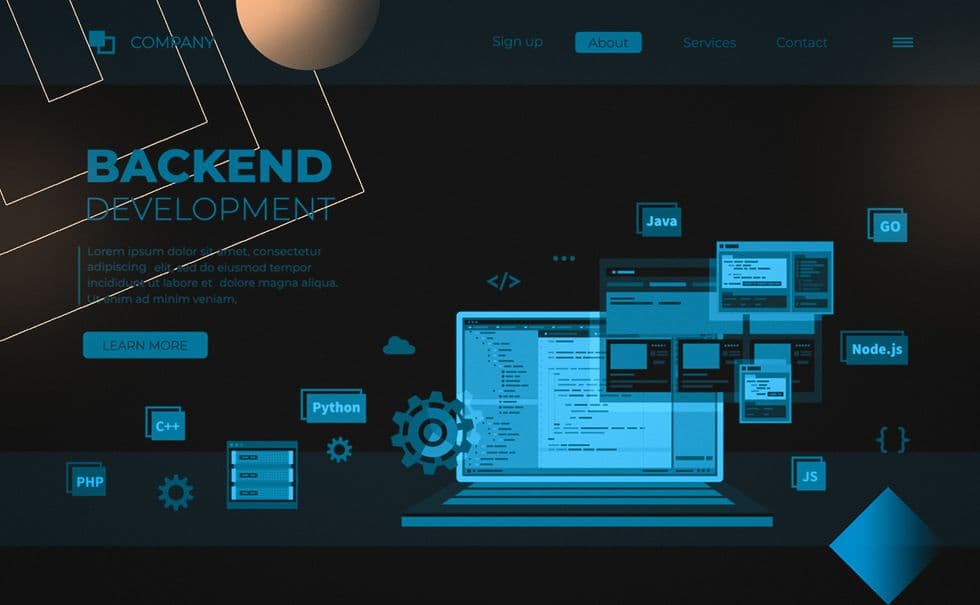Backend development serves as the backbone of modern web applications, and building robust and scalable APIs is crucial for delivering seamless user experiences. In this comprehensive guide, we'll delve into the best practices that empower developers to create resilient and high-performance backend systems. Whether you're a seasoned backend developer or just starting, this guide will equip you with the knowledge needed to design APIs that stand the test of time.
Table of Contents
- Understanding Backend Development
- Designing a Solid API Architecture
- Authentication and Authorization
- Data Validation and Sanitization
- Efficient Database Querying
- Error Handling and Logging
- Caching Strategies for Performance
- Security Measures
- Testing and Test-Driven Development
- Scalability Considerations
- Documentation for Developer-Friendly APIs
- Continuous Integration and Deployment
1. Understanding Backend Development
Backend development involves creating the server-side logic and databases that power web applications. A well-designed backend ensures data integrity, security, and optimal performance.
2. Designing a Solid API Architecture
A robust API architecture is the foundation of a scalable backend. Utilize RESTful principles or GraphQL depending on your project requirements. Define clear endpoints, and structure your API to provide a logical flow of data.
// Example RESTful API endpoint
app.get('/api/users', (req, res) => {
// Fetch and return user data
});
3. Authentication and Authorization
Implement secure authentication mechanisms, such as OAuth or JWT, to verify user identity. Additionally, enforce proper authorization to control access to specific resources and functionalities.
// Example middleware for authentication
const authenticateUser = (req, res, next) => {
// Validate user token and set user context
next();
};
4. Data Validation and Sanitization
Protect your API from malicious input by implementing thorough data validation and sanitization processes. Use libraries like Joi for validation and sanitize user input to prevent injection attacks.
// Example validation using Joi
const validateUserInput = (data) => {
const schema = Joi.object({
username: Joi.string().alphanum().min(3).max(30).required(),
email: Joi.string().email().required(),
password: Joi.string().pattern(new RegExp('^[a-zA-Z0-9]{3,30}$')).required(),
});
return schema.validate(data);
};
5. Efficient Database Querying
Optimize database queries to ensure efficient data retrieval. Indexing, proper query planning, and utilizing database-specific optimizations contribute to enhanced performance.
// Example MongoDB query
const getUsers = async () => {
const users = await User.find().select('username email');
return users;
};
6. Error Handling and Logging
Implement robust error handling to provide meaningful feedback to clients and log errors for debugging. Centralized logging helps track issues and improves the overall stability of your backend.
// Example error handling middleware
app.use((err, req, res, next) => {
console.error(err.stack);
res.status(500).send('Something went wrong!');
});
7. Caching Strategies for Performance
Implement caching mechanisms to reduce response times and minimize server load. Utilize in-memory caching or external caching solutions based on your application's requirements.
// Example caching with Redis
const cache = require('redis').createClient();
const getCachedData = async (key) => {
const cachedData = await cache.get(key);
return cachedData ? JSON.parse(cachedData) : null;
};
8. Security Measures
Prioritize security by staying updated on the latest security threats and implementing measures like input validation, encryption, and secure communication protocols (HTTPS).
9. Testing and Test-Driven Development
Adopt a test-driven development approach to ensure code reliability. Write unit tests, integration tests, and end-to-end tests to validate your backend functionality.
// Example unit test with Jest
test('should return the sum of two numbers', () => {
expect(add(2, 3)).toBe(5);
});
10. Scalability Considerations
Design your backend to handle increasing loads. Consider horizontal scaling, load balancing, and optimizing resource-intensive operations to prepare your API for growth.
11. Documentation for Developer-Friendly APIs
Create comprehensive API documentation to assist developers in integrating with your backend seamlessly. Tools like Swagger or API Blueprint can help generate clear and interactive documentation.
12. Continuous Integration and Deployment
Implement CI/CD pipelines to automate testing, build processes, and deployment. This ensures consistent code quality and facilitates rapid, reliable releases.
Conclusion
Building robust and scalable APIs is a continuous journey that involves a combination of best practices, adaptability, and a commitment to quality. By following the guidelines outlined in this guide, you'll be well-equipped to design backend systems that not only meet current needs but also evolve with the demands of the future. Elevate your backend development skills and contribute to the creation of powerful and reliable web applications. Happy coding!




